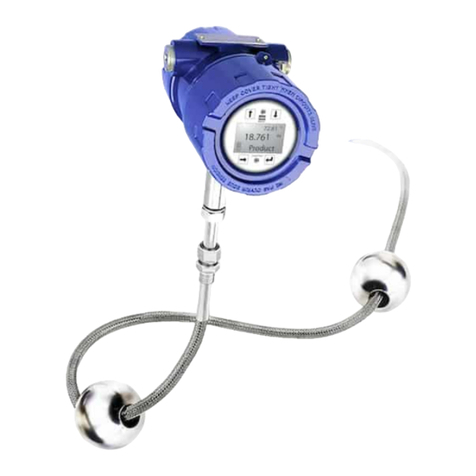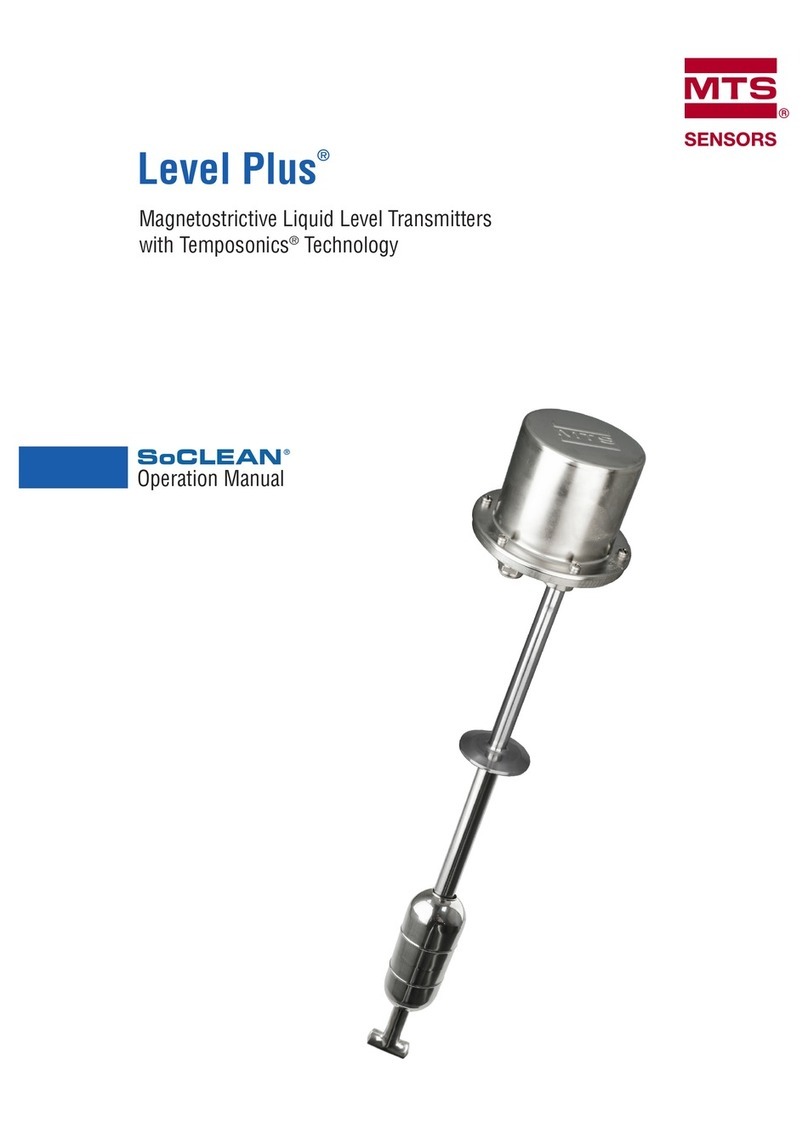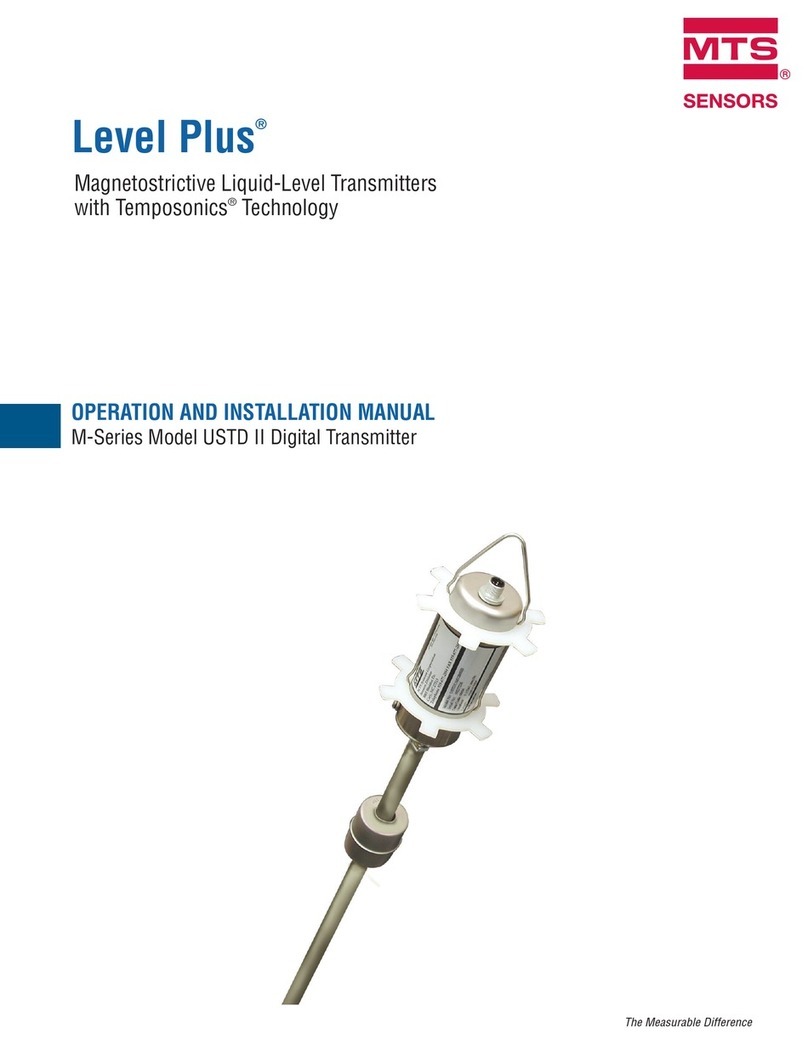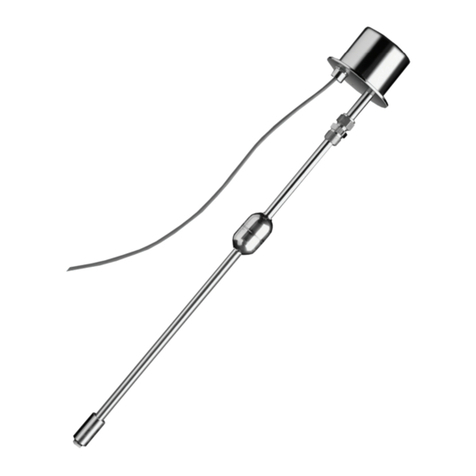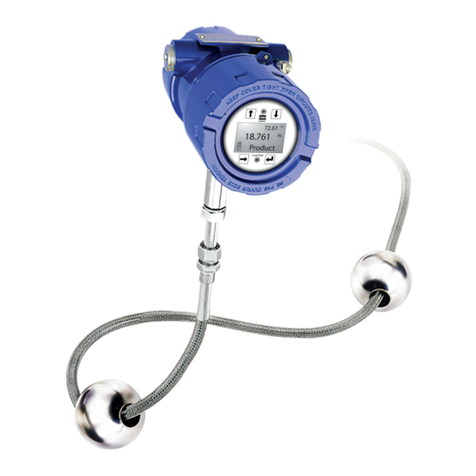2. Terms and denitions
6A Heavy Oils
‘Generalized Crude Oils’, Correction of Volume to 60 °F against API
Gravity.
6B Light Oils
‘Generalized Products’, Correction of Volume to
60 °F against API Gravity.
6C Chemical
‘Volume Correction Factors (VCF)’ for individual and special applica-
tions, volume correction to 60 °F against thermal expansion coeffi-
cients.
6C Mod
An adjustable temperature reference for defining VCF.
A
API Gravity
The measure of how heavy or light a petroleum liquid is compared to
water. Allowable values are 0 to 100 degrees API for (6A) and 0 to 85
degrees API for (6B).
D
DDA
‘Direct Digital Access’ – The proprietary digital protocol developed by
MTS for use in intrinsically safe areas.
Density
Mass divided by the volume of an object at a specific temperature. The
density value should be entered as lb / cu. ft..
E
Explosionproof
Type of protection based on enclosure in which the parts which can
ignite an explosive gas atmosphere are placed within, and which can
withstand the pressure developed during an internal explosion of an ex-
plosive mixture, and which prevents the transmission of the explosion
to the explosive gas atmosphere surrounding the enclosure.
F
Flameproof
Type of protection based on enclosure in which the parts which can
ignite an explosive gas atmosphere are placed within and which can
withstand the pressure developed during an internal explosion of an ex-
plosive mixture, and which prevents the transmission of the explosion
to the explosive gas atmosphere surrounding the enclosure.
FOUNDATION™ eldbus
An all digital, serial, two-way communications system that serves as
the base-level network in a plant or factory automation environment.
Developed and administered by the fieldbus FOUNDATION™.
G
GOVI
‘Gross Observed Volume of the Interface’ – The total volume of the tank
occupied by the interface liquid. The GOVI is only given when mea-
suring two liquids and is calculated by subtracting the volume of the
product from the total volume of liquid in the tank (GOVT – GOVP).
GOVP
‘Gross Observed Volume of the Product’ – The total volume of the tank
occupied by the product liquid. When measuring only one liquid, it is
also the total volume of liquid in the tank (GOVT). When measuring two
liquids it is the total volume of liquid in the tank minus the volume of
the interface liquid (GOVT – GOVI).
GOVT
‘Total Gross Observed Volume’ – The total volume of liquid in the tank.
When measuring only one liquid it is equal to the volume of the product
(GOVP). When measuring two liquids it is equal to the volume of the
product and interface liquids (GOVP + GOVI).
GOVU
‘Gross Observed Volume Ullage’ – the difference in volume between the
working capacity of a tank and the total volume in the tank (Working
Capacity – GOVT).
H
HART®
A Bidirectional communication protocol that provides data access
between intelligent field instruments and host systems.
I
Interface
Noun; The measurement of the level of one liquid when that liquid is
below another liquid.
Interface
Adj.; The Software Graphical User Interface (GUI) that allows the user
to access software protocols (HART, DDA, MODBUS).
Intrinsic safety
‘Intrinsically safe’ - Type of protection based on the restriction of
electrical energy within apparatus of interconnecting wiring exposed to
potentially explosive atmosphere to a level below that which can cause
ignition by either sparking or heating effects.
